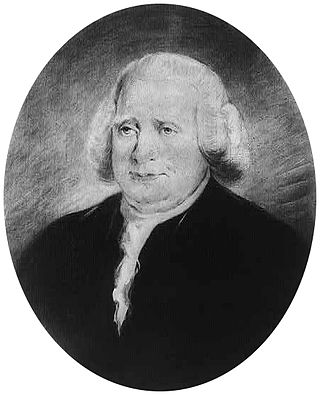
Carter Braxton was a Founding Father of the United States, signer of the Declaration of Independence, merchant, and Virginia planter. A grandson of Robert "King" Carter, one of the wealthiest and most powerful landowners and slaveholders in Virginia, Braxton was active in Virginia's legislature for more than 25 years, generally allied with Landon Carter, Benjamin Harrison V, Edmund Pendleton and other conservative planters.

Shirley Plantation is an estate on the north bank of the James River in Charles City County, Virginia. It is located on scenic byway State Route 5, between Richmond and Williamsburg. It is the oldest active plantation in Virginia, settled in 1613 and is also the oldest family-owned business in North America, when it was acquired by the Hill family, with operations starting in 1638. White indentured servants were initially used as the main labor force until the early 1700s, when black slavery became the primary source of Virginian labor. It used about 70 to 90 African slaves at a time for plowing the fields, cleaning, childcare, and cooking. It was added to the National Register in 1969 and declared a National Historic Landmark in 1970. After the acquisition, rebranding, and merger of Tuttle Farm in Dover, New Hampshire, Shirley Plantation received the title of the oldest business continuously operating in the United States.

Elsing Green Plantation, a National Historic Landmark and wildlife refuge, rests upon nearly 3,000 acres (1,200 ha) along the Pamunkey River in King William County, Virginia, a rural county on the western end of the state's middle peninsula, approximately 33 miles (53 km) northeast of the Richmond. The 18th-century plantation, now owned by the Lafferty family, has been in continuous operation for more than 300 years. In addition to the plantation house, dependency buildings and cultivated land, Elsing Green includes 2,454 acres (993 ha) of surrounding farmland, forest and marsh land. Elsing Green has been on the Virginia Landmarks Register and the National Register of Historic Places since 1969, and received formal National Historic Landmark status in 1971.

Watters Smith Memorial State Park is a 532-acre (2.15 km2) historical park and national historic district with a pioneer homestead and museum located in Harrison County, West Virginia. The homestead, rising above Duck Creek, is a memorial to settler Watters Smith, who was born in Trenton, New Jersey, in 1767, and moved to Harrison County in what was then Virginia, in 1796, with his wife Elizabeth Davisson Smith. A log cabin similar to the original was moved and reconstructed on the park, together with farm buildings typical of early 19th century settlement. The more modern Smith family home has been restored as a museum, and an additional museum houses many local farm artifacts from earlier eras. Guided tours are offered from Memorial Day weekend through Labor Day. In addition, the park features swimming, picnicking, hiking trails, and horseback riding.

Ampthill is a plantation located in Cartersville, Virginia, United States, roughly 45 minutes west of Richmond, and just over an hour south of Charlottesville. The property is listed on both the National Register of Historic Places and the Virginia Landmarks Register.

Greenlawn Memorial Park, also known as Greenlawn Cemetery, is located at 2700 Parish Avenue, Newport News, Virginia. Greenlawn Memorial Park is a 50-acre (200,000 m2) cemetery located where two natural streams, Mill Dam Creek and Salters Creek, come together. The cemetery has been in continuous operation, serving the Newport News and Hampton, Virginia, since 1888. There are approximately 20,000 burials in the cemetery. Greenlawn Memorial Park is on the National Register of Historic Places.
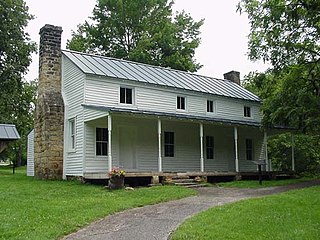
Cunningham House and Outbuildings, also known as Cunningham Farm, is a historic home located near Napier, Braxton County, West Virginia. The house dates to the 1830s, and is a two-story, log structure sided with white clapboards. Also located on the property is a food cellar and granary. The buildings are representative of traditional central West Virginia subsistence farming techniques. The site was purchased by the Army Corps of Engineers during the development of Burnsville Lake, and is administered as part of the Bulltown Historic Area.
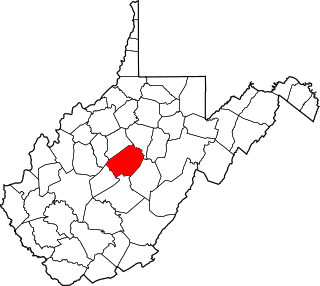
This is a list of the National Register of Historic Places listings in Braxton County, West Virginia.

Blenheim is a historic home and farm complex located at Blenheim, Albemarle County, Virginia. The once very large surrounding plantation was established by John Carter. Late in the 18th century, his son Edward Carter became the county's largest landowner, and in addition to public duties including service in the Virginia General Assembly built a mansion on this plantation where he and his family resided mostly in summers, but which was destroyed by fire and sold by auction circa 1840.

Redlands is a historic home located near Covesville, Albemarle County, Virginia. It was built between about 1798 and 1808, and is a rectangular two-story, five-bay, brick structure covered by a hipped roof in the Federal style. It features a Tuscan order front porch. Its interior is notable for its fine Adamesque woodwork. The master builder of the house was Martin Thacker, of neighboring Cedar Grove. It was built for Robert Carter, grandson of John Carter, around the time of his marriage to Mary Eliza Coles of neighboring Enniscorthy.

Farley, previously named Sans Souci, is a historic home located near Brandy Station, Culpeper County, Virginia. It was built before 1800, purchased from Robert Beverly in 1801 by William Champe Carter and renamed Farley in honour of his wife, Maria Byrd Farley. It is a two-story, frame dwelling, nine bays across with two bay projecting pavilions at either end and a single-bay pavilion in the center. The house measures 96 feet long and 46 feet deep.

Berry Hill is or was a historic home and farm complex located near Danville, Pittsylvania County, Virginia, United States. It was listed on the National Register of Historic Places in 1980. However, may be in the process of being delisted in connection with industrial development plans by Mega Site, the City of Danville and Pittsylvania County.

A. P. and Sara Carter House is a historic home located at Maces Spring, Scott County, Virginia. The original one-story, frame dwelling was enlarged by an additional 1/2-story for more bedroom space in the 1920s–1930s. The remodeling resulted in a vernacular interpretation of the popular Bungalow style. The house is most notable for its association with the Carter Family, a traditional American folk music group that recorded between 1927 and 1956. It was the home of Alvin Pleasant "A.P." Delaney Carter (1891–1960) and his wife Sara Dougherty Carter (1898–1979).
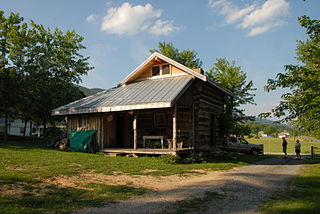
A. P. Carter Homeplace is a historic home located at Maces Spring, Scott County, Virginia. It is a small, one-story, half-dovetailed log cabin, with a single room on the first floor and loft above. The house is most notable for its association with a traditional American folk music group that recorded between 1927 and 1956. It is the birthplace of Alvin Pleasant "A.P." Delaney Carter (1891–1960) of the Carter Family.

Maybelle and Ezra Carter House is a historic home located at Maces Spring, Scott County, Virginia. The original one-story, frame dwelling was enlarged by an additional 1/2-story for more bedroom space in the 1920s-1930s. The 1936 remodeling resulted in a vernacular interpretation of the popular Bungalow style. The house is most notable for its association with the Carter Family, a traditional American folk music group that recorded between 1927 and 1956. It was the home of Maybelle Addington Carter (1909–1978), who was married to Alvin Pleasant "A.P." Delaney Carter's (1891–1960) brother Ezra Carter (Eck).

Carter–Gilmer House is a historic home located at Charlottesville, Virginia. It was built about 1820, and is a three-story, three-bay, Federal style brick townhouse dwelling. The house has been divided into apartments.

The Laburnum Park Historic District is a national historic district located at Richmond, Virginia. The district encompasses 226 contributing buildings and 2 contributing structures located north of downtown Richmond. The primarily residential area developed starting in the early-20th century as one of the city's early "streetcar suburbs" and as home to several important local institutions. The buildings are in a variety of popular early-20th century architectural styles including Queen Anne and Colonial Revival. It was developed as neighborhood of middle-to-upper-class, single-family dwellings. Notable buildings include the Laburnum House (1908), Richmond Memorial Hospital (1954–1957), Richmond Memorial Hospital Nursing School (1960–1961), "The Hermitage" (1911), Laburnum Court (1919), Veritas School.
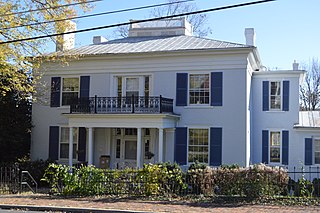
Thomas J. Michie House is a historic home located at Staunton, Virginia. It was built in 1847–1848, and is a three-story, three-bay, Greek Revival style brick dwelling with a two-story wing. The total size is 7,100 square feet. The front facade features a one-story, flat-roofed entrance porch supported by four slender Tuscan order columns. The interior has two elaborate country Federal mantels taken from a nearby 1820 country home. It was built by Thomas J. Michie, who represented Augusta County in the Virginia House of Delegates and may be of the same family that built Michie's Tavern in Charlottesville, Virginia as well as Michie Stadium at West Point Military Academy. It was later the home of jurist Allen Caperton Braxton (1862-1914) and Henry W. Holt (1864-1947) who was the Chief Justice of the Virginia Supreme Court.
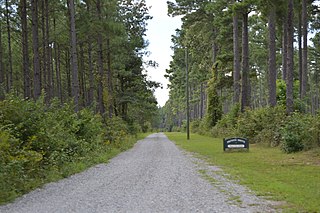
Newington Archaeological Site is a historic plantation and archaeological site located at King and Queen Courthouse, King and Queen County, Virginia. It was the birthplace and childhood home of Founding Father Carter Braxton, a signatory of the Declaration of Independence. Both the original plantation and its reconstruction had burnt down by the first decade of the 20th century. The property contains both archaeological ruins and surviving landscape elements from the former 18th century plantation. While a stone building is the only above ground 18th century structure remaining, among other ruins, the location of the plantation mansion, two outbuilding foundations, and two cellars have been identified. The existing landscape elements include a cemetery, historic road, and the terraces of a falling garden. The property also contains Native American deposits associated mostly with the Woodland period.
























